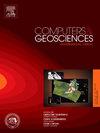LSTM-based proxy model combined with wellbore-reservoir coupling simulations for predicting multi-dimensional state parameters in depleted gas reservoirs
IF 4.2
2区 地球科学
Q1 COMPUTER SCIENCE, INTERDISCIPLINARY APPLICATIONS
引用次数: 0
Abstract
Although most CO2 geologic storage projects focus on deep saline aquifers, depleted gas reservoirs are a more economical option as a potential site. However, due to the extremely low initial pressure, the injection of high-pressure supercritical CO2 into the reservoir can result in dramatic changes in CO2 properties, which may affect the well head pressure and bottom hole pressure. Aside from the injection rate, the injection of supercritical CO2 at different temperature and pressure has varying degrees of impact on reservoir pressure. In order to design the optimal injection condition, a deep learning proxy model, combining wellbore-reservoir coupling numerous simulations, is proposed to quickly interrogate status response of wellbores and reservoirs. Based on 567 simulation cases of supercritical CO2 injection into a deep depleted gas reservoir, the model uses the T2Well/ECO2N software to capture the time evolution of the pressure, temperature, and rate fields of wellbore and reservoirs, and is trained to get the optimal LSTM-based proxy network. Compared with simulation results, the proxy model predicts in less than 0.1s while ensuring an overall coefficient of determination (R2) of up to 99.9%. The maximum prediction errors of pressure, temperature, and rates at all times are also not more than 0.04, 0.02, and 0.08 for a single case, respectively. The assessment findings of the ultimate reservoir pressure based on the model show that injecting supercritical CO2 under low initial pressure and high temperature is beneficial to the long-term safety of CO2 sequestration engineering in depleted gas reservoirs.
基于lstm的代理模型与井储耦合模拟相结合预测枯竭气藏多维状态参数
虽然大多数二氧化碳地质储存项目都集中在深层咸水含水层,但作为潜在地点,枯竭气藏是一个更经济的选择。然而,由于初始压力极低,向储层注入高压超临界CO2会导致CO2性质发生剧烈变化,从而影响井口压力和井底压力。除注入速度外,不同温度和压力下注入超临界CO2对储层压力的影响程度也不同。为了设计最优的注入条件,提出了一种结合井筒-油藏耦合的深度学习代理模型,以快速查询井筒和油藏的状态响应。该模型基于567个深部枯竭气藏超临界CO2注入模拟实例,利用T2Well/ECO2N软件捕捉井筒和储层压力、温度、速率场的时间演化,并进行训练,得到基于lstm的最优代理网络。与模拟结果相比,代理模型的预测时间在0.1s以内,总体决定系数(R2)高达99.9%。在任何情况下,压力、温度和速率的最大预测误差也分别不超过0.04、0.02和0.08。基于该模型的储层极限压力评价结果表明,在低初始压力和高温条件下注入超临界CO2有利于枯竭气藏CO2封存工程的长期安全。
本文章由计算机程序翻译,如有差异,请以英文原文为准。
求助全文
约1分钟内获得全文
求助全文
来源期刊

Computers & Geosciences
地学-地球科学综合
CiteScore
9.30
自引率
6.80%
发文量
164
审稿时长
3.4 months
期刊介绍:
Computers & Geosciences publishes high impact, original research at the interface between Computer Sciences and Geosciences. Publications should apply modern computer science paradigms, whether computational or informatics-based, to address problems in the geosciences.
 求助内容:
求助内容: 应助结果提醒方式:
应助结果提醒方式:


